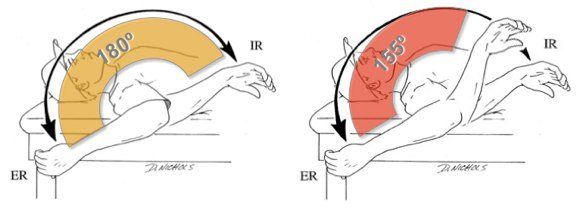
An Orthopedic information source updated by the physicians of Cooley-Dickinson Medical Group Orthopedics and Sports Medicine; aimed at helping the active population of Western Massachusetts get the most out of life.
Sunday, February 21, 2016
What To Do About Your Torn Meniscus...
A torn mensicus is one of the most common problems we see in the office. Once you have a the diagnosis of a torn meniscus, what does that mean? The meniscus doesn't heal on its own but that doesn't mean that you have to have surgery. Sometimes meniscal tears can be managed without surgery. When they do need to be addressed surgically, most frequently this means removing the torn piece, much like clipping off a hangnail. In the ideal situation (young, healthy patient with the perfect tear) the meniscus can be repaired. This is only about 10-15% of the time. Follow this link from the American Orthopedic Society of Sports Medicine to see how arthroscopic meniscal surgery happens.


Saturday, January 16, 2016
Preventing Throwing Injuries
Truck Day is less than a month away. For those of you non-Seam Heads, Truck Day is the distinctly New England holiday were Red Sox fans cheer the departure of the equipment truck as it leaves Fenway Park, heading to Spring Training. With this in mind, it is about time to start thinking about preventing throwing and baseball/softball injuries. We will be holding another thrower’s clinic toward the end of February, but until then here are some thoughts on injuries to throwers, and how to decrease your chances of missing games…
GIRD, Glenohumeral Internal Roation Defecit is one of the natural adaptations to throwing that occurs in the shoulder.

I once read that pitching is “... an injury in progress.” The mechanics and repetitive nature of pitching cause such unnatural forces through the arm that the body can’t help but attempt to adapt. One of the adaptations that occurs is that the muscles in the back of the shoulder get stronger and tighter. The Infraspinatus and Teres Minor muscles are important stabilizers in the shoulder and are engaged as a pitcher cocks their arm in preparation for the throw. As a season progresses, the posterior muscles become stronger and tighter than the anterior muscles. This uneven distrubution of strength causes the posterior muscles to act as a teather, forcing the shoulder joint to shift forward. It also prevent the shoulder from being able to approriately internally rotate. The forward shift of the ball in the socket causes wearing of the labrum and tendonitis of the biceps and the other rotator cuff tendon. Ultimately, this can lead to shoulder pain, decrease velocity or control, altered mechanics and elbow issues. This adaptation is very predictable but also very treatable. With a little guidance from a physical therapist, trainer or strength and conditioning coach, pitchers can incorporate the “Sleeper stretch” and rotator cuff exercises to achieve better balance in the shoulder.
GIRD, Glenohumeral Internal Roation Defecit is one of the natural adaptations to throwing that occurs in the shoulder.

I once read that pitching is “... an injury in progress.” The mechanics and repetitive nature of pitching cause such unnatural forces through the arm that the body can’t help but attempt to adapt. One of the adaptations that occurs is that the muscles in the back of the shoulder get stronger and tighter. The Infraspinatus and Teres Minor muscles are important stabilizers in the shoulder and are engaged as a pitcher cocks their arm in preparation for the throw. As a season progresses, the posterior muscles become stronger and tighter than the anterior muscles. This uneven distrubution of strength causes the posterior muscles to act as a teather, forcing the shoulder joint to shift forward. It also prevent the shoulder from being able to approriately internally rotate. The forward shift of the ball in the socket causes wearing of the labrum and tendonitis of the biceps and the other rotator cuff tendon. Ultimately, this can lead to shoulder pain, decrease velocity or control, altered mechanics and elbow issues. This adaptation is very predictable but also very treatable. With a little guidance from a physical therapist, trainer or strength and conditioning coach, pitchers can incorporate the “Sleeper stretch” and rotator cuff exercises to achieve better balance in the shoulder.
Subscribe to:
Posts (Atom)
